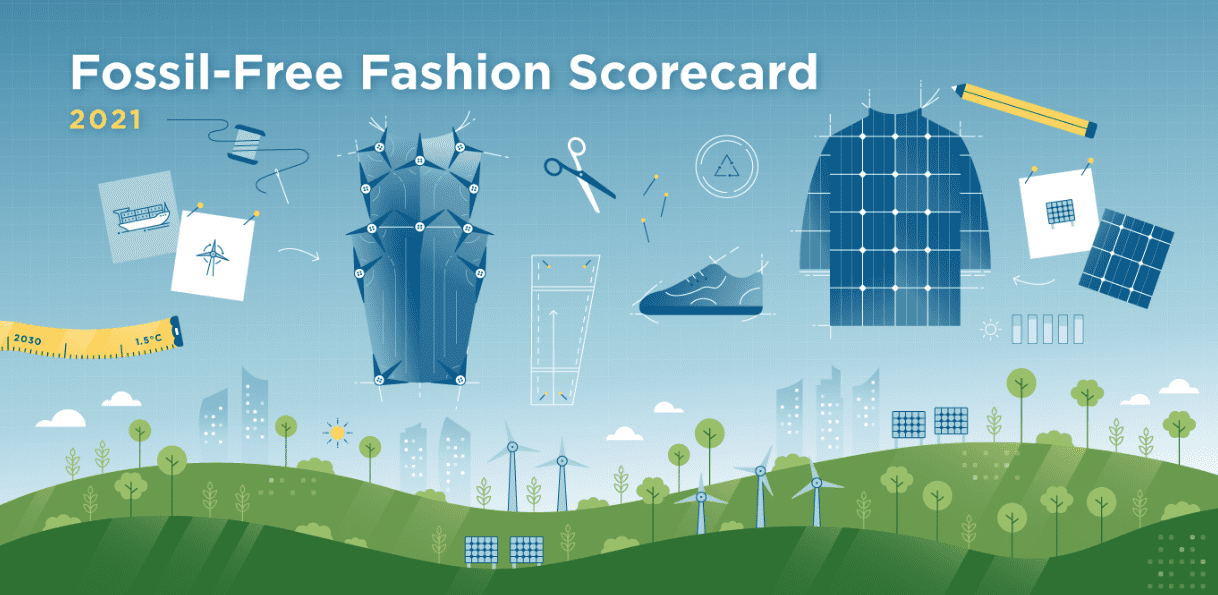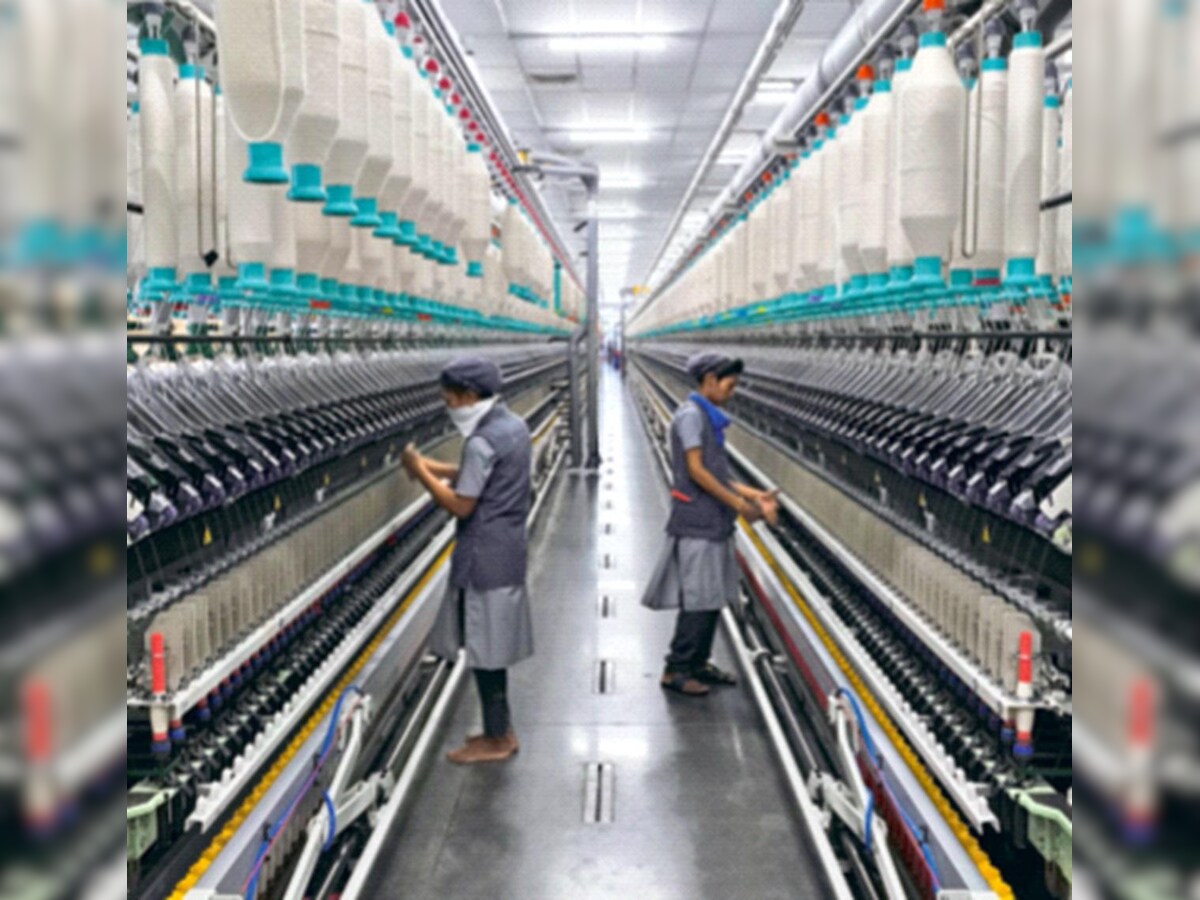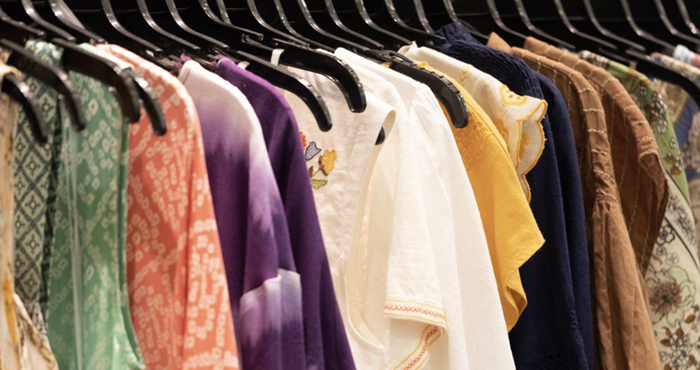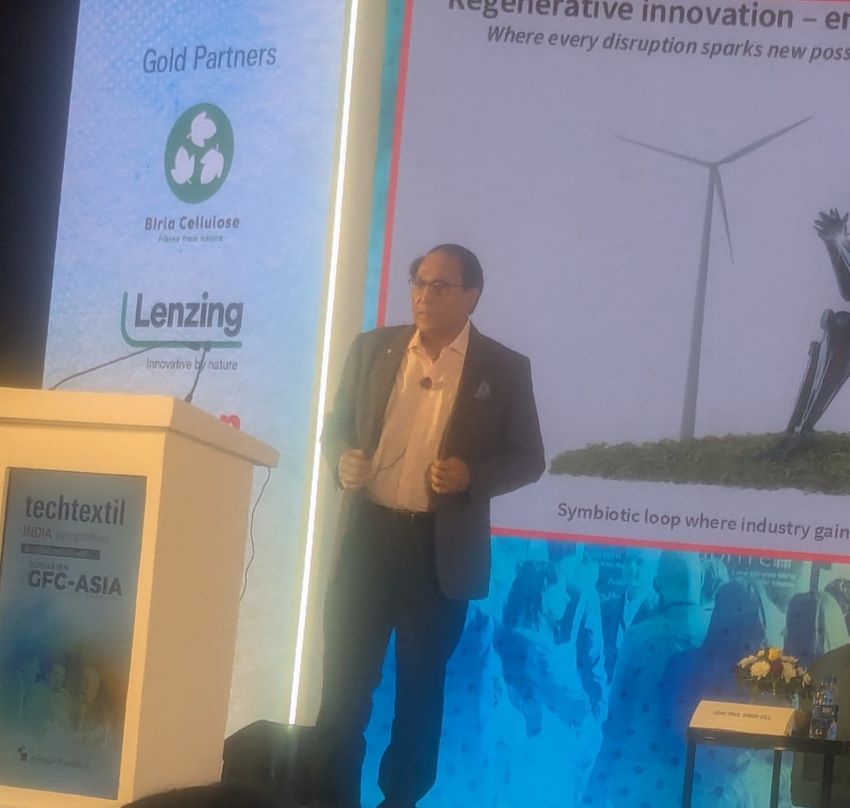FW
Most global brands doing business in Bangladesh have decided not to move away from the country. They will continue to buy products from Bangladesh’s garment sector despite serial attacks on the foreigners by the Islamist extremists.
Despite the terror strike at a Dhaka restaurant that raised eyebrows of many US-based fashion brands, the Alliance for Bangladesh Worker Safety has declared that most of the US companies have decided to stay in Bangladesh and purchase products from Bangladesh’s garment industry.
Meanwhile, along with other friendly countries, US has also expressed serious concern over the security conditions in Bangladesh and offered help in country’s fight against terrorism. People of Bangladesh have been witnessing serial attacks on religious minorities, foreign nationals and independent bloggers from the last couple of years, but the Dhaka café attack was the biggest among them that caught global attention since many foreigners including Japanese, Italian and Indian nationals were killed in the attack.
In order to help Bangladesh in its fight against growing extremism, the United States has agreed to work together. Bangladesh’s Information Minister Hasanul Haq Inu has recently made it clear that like Bangladesh, the US is also worried about the security situation in the country. He added that the US has expressed willingness to work with the government of Bangladesh to address issues like cyber crime and militancy.
China’s Zhejiang Export Fair 2016 was held at the International Exhibition Centre in Hanoi from August 4-6. Inaugurating the fair, Feng Wei, Director, Economic-Commerce Desk under China's Zhejiang Commerce Department said the Zhejiang Export Fair would serve as an important bridge to boost China-Vietnam bilateral trade ties. He said to further enhance reciprocal cooperation with ASEAN countries, including Vietnam, his department carried out a project to promote Zhejiang-made products to the world.
Under the project and with the support of Vietnam's Ministry of Industry and Trade (MoIT), the fifth Zhejiang Export Fair could draw participation of 114 Zhejiang companies. Zhejiang is a coastal province located in the Southeast of China with ideal natural conditions. It posted rapid economic growth in recent years and boasts of economic relations with over 230 countries and territories around the world. In 2015, the province’s total export turnover reached $347.4 billion.
For China, Vietnam continued to be the largest trading partner with total import-export revenue of more than $66.6 billion in 2015, up 13.4 per cent year-on-year. For Vietnam too China is the largest trading partner among ASEAN countries. With the intention of promoting the attractive feeling of Zhejiang Made products to Vietnam and Southeast Asia, the fair drew a great deal of attention from local companies and consumers.
VF Corporation has appointed Jim Pisani as its Global Brand President for Timberland®, with immediate effect. Pisani replaces Stewart Whitney who left the company in July 2016. Most recently, Pisani served as President of VF’s licensed sports group that includes the Majestic® brand. He will report to Scott Baxter, Vice President, VF and Group President, Outdoor & Action Sports Americas.
Pisani joined VF in 2008 as President of VF Licensed Sports Group. The business unit’s Majestic® brand is the official on-field uniform provider for Major League Baseball. It also supplies apparel and fan wear through licensing agreements with U.S. and international professional sports leagues, colleges and universities, and lifestyle brands.
Prior to VF, Pisani held a succession of leadership roles in branding, merchandising, sales and marketing at PepsiCo and Kraft Foods.
For Indonesian textile giant Sri Rejeki Isman (Sritex), the security concerns in Europe caused by a series of terrorist attacks and an influx of refugees from war-torn Middle Eastern countries has presented an opportunity to expand its military uniform business, under the brands Sritex and SRX. The company is intensifying its approach to affected countries, in the hope of tapping into the spillover from their defense budgets.
Sritex corporate secretary Welly Salam says, they are eyeing three countries in Europe, some former Soviet Union countries, to export military and fashion items. Sritex, exports military uniforms to 30 countries and aims to increase export proportion gradually from 49 to 60 per cent by 2018. Among its biggest overseas customers are Germany, Malaysia and the United Arab Emirates.
Apart from efforts to open up new markets, Sritex, has also been developing an additional production facility at $245 million to boost its annual production since 2014. The new facility, located in the Central Java city of Sukoharjo, will support its existing factory, which currently runs at a 90 per cent utility rate and employs almost 18,000 workers. Once completed by this year-end, the new plant will add to the total capacity of Sritex’ annual production by 16 per cent to 654,0000 bales of thread; weaving 50 per cent more to 120 million meters of greige fabric, dying 100 per cent more to 240 million yards of fabric and tailoring 67 per cent more to 30 million pieces of attire.
The half-century-old firm buys raw material, like cotton, 100 per cent from Australia and the US, 50 per cent of its polyester comes locally and 50 per cent of its rayon locally as producers of the two materials are also limited in the country.
Mimaki Engineering, is a global industry leader and manufacturer of wide-format inkjet printers, cutting plotters, 3D modeling machines and RIP software. The company adds value to the print production process with innovative software solutions that drive accurate, brilliant colour, attracting attention in an ever-more-colourful world.
Three new software solutions highlight this innovative approach. They are the Artista Textile Color Collection, Mimaki Profile Master 3 (MPM3) for advanced printer profiling and RasterLink6 Version 5.0. All the solutions are designed to help printers deliver accurate, repeatable colour across multiple devices and locations.
As textile and apparel manufacturers aim at achieving faster time-to-market, reducing inventories and increasing flexibility to address rapidly evolving trends In the textile industry, the shift from analogue to digital production is underway. Yet colour matching remains a significant issue due to the lack of a standardised colour chart that enables colour consistency from design through production. The company is filling that gap with the Artista Textile Color Collection, making it faster and easier for textile and apparel manufacturers to achieve the desired colour without wasteful trial and error.
International Finance Corporation (IFC), a member of the World Bank Group, has joined hands with Sri Lanka’s leading local apparel manufacturer Hela Clothing to boost trade for Sri Lanka’s apparel industry through a trade-supplier finance facility. With this, Hela Clothing becomes the latest apparel company in the country to join IFC’s Global Trade-Supplier Finance program.
IFC will provide a supplier finance credit line to Hela Clothing against receivables from selected international buyers and provide working capital directly to the company. Supplier finance is a scalable and manageable method for suppliers in emerging markets to access affordable financing against receivables from customers. The product offers suppliers an additional source of flexible, affordable funding and may allow the buyer to negotiate longer payment terms or better prices.
Established in 2010, the IFC Global Trade Supplier Finance program is a $500 million multi-currency investment and advisory program that provides short-term finance to emerging market suppliers and small and midsize exporters. The program also helps banks that offer supply-chain finance to increase their presence in emerging markets. The GTSF program offers differentiated pricing based on the social and environmental performance of suppliers.
Sri Lanka is a priority country for IFC. IFC’s committed portfolio in Sri Lanka is now $230 million and covers projects across a range of sectors including infrastructure, tourism, renewable energy, finance and healthcare.
It also provides advisory services to promote sustainable growth among small and medium enterprises by facilitating access to finance, and by offering capacity-building and training opportunities.
In order to strengthen its sales and after-sales functions, analysis of industry and product trends, expand business and improve customer satisfaction, Huntsman Textile Effects has streamlined its India commercial organization. With dedicated sales teams covering North, Central and South India and Sri Lanka regions, the teams are now more geographically aligned with the customer base in India. Being seriously focused on a smaller region will improve operational efficiency, customer focus and response time for each sales team as they benefit from more agile and quicker decision-making.
Headquartered in Mumbai, the sales teams will be supported by a full-fledged technical resource team and regional marketing team aimed at enhancing the performance of each function. These teams will also provide dedicated strategic marketing and higher level of after sales support. Recently, the company also made significant investments in research & technology and technical services. The increased capabilities of its R&T and technical service laboratories facilities in its office complex will improve sales and after sales service offerings.
The company is confident that these investments will lead to a higher level of customer satisfaction through increased efficiency and customer focus.
The Myanmar Garment Manufacturers Association (MGMA) doesn’t foresee immediate adverse effects on exports from the Brexit vote even though UK is one of the largest European garment importers.
Europe is currently the second largest importer of garments from Myanmar after Japan. Among the 28 European Union countries, Germany, the UK and Spain are the major players in garment product trade.
While the vote to exit the European Union has been cast in late June, the official two-year separation process is yet to begin. So it will not negatively impact the Myanmar garment sector, it is understood.
The United Kingdom is second-largest trading country among the EU. The Brexit process will take two to two and a half years. The impact may be felt in 2018-19, it is also gathered.
Myanmar’s garment exports rely on countries that Myanmar has a General System of Preferences (GSP) status with. The EU offered GSP status to Myanmar in 2013. And that is why exports to the region have increased.
If the UK continues Myanmar’s GSP status post removal, there will be no impact on the sector. In the previous fiscal year, garment trade volume between Myanmar and EU reached $460 million.
Myanmar’s garment export reached $1 billion in 2012-13, $1.4 billion in 2013-14, and $1.6 billion in 2014-15 fiscal year, according to a statistics released by MGMA.
Once upon a time, handloom attire was regarded as ideal attire for politicians and villagers. Even as mass-market clothing still dominates, it's seeing a revival with demand of handloom dress material being sourced for ethical fashion.
India is among the biggest manufacturers of textiles and apparel in the world supplying leading international brands. But the domestic market being large too, it accounts for more than 40 per cent of the industry's revenue.
The sector is dominated by small and medium-sized firms that are under enormous pressure to reduce costs and produce garments quickly. Many use forced labour, while abuses including withheld salaries and debt bondage are rife, it is gathered.
Wages in India's textile and garment industry are about $1.06 an hour, compared with $2.60 in China, according to the World Bank.
The pressure on margins trickles down to cotton farmers. More than 90 per cent of cotton in India is genetically modified and as those seeds cannot be replanted, farmers have been seen struggling with rising input costs and lower prices for cotton.
Tens of thousands of indebted cotton farmers in the western state of Maharashtra have killed themselves in the past two decades.
It was the plight of these farmers that drove Apurva Kothari, who was working in technology in San Francisco, to return to India and set up apparel brand No Nasties in 2011.
The company sources organic cotton and audits its supply chain to ensure that there is no child labour workers receive fair wages, he observes.
No Nasties and Do U Speak Green are among a handful of Fairtrade-licensed clothing brands in India. They source from producers including Rajlakshmi Cotton Mills which deals in organic and fair trade cotton and pays fair wages and Chetna Organic whose seed conservation project has organic seedbanks from which farmers can withdraw seeds.
They are getting a boost from Fairtrade India, which set up office in 2013, and has stamped its distinct circular logo on a small range of products including tea, coffee, rice and sugar.
It is also working with Amazon India to make Fairtrade-certified products available online.
Working conditions and wages in South Asia's garment industry have come under greater scrutiny since the April 2013 Rana Plaza disaster in Bangladesh, in which more than 1,100 workers died.
But efforts of retailers to clean up supply chains will have little impact unless consumers in India demand more ethically produced goods, analysts say.
Brands can take inspiration from success stories including Fabindia. Set up in 1960 to market diverse craft traditions, the company appeals to both young and old consumers, the wealthy and the not-so wealthy.
Apparel retailer Gap faced a smaller-than-expected drop in quarterly sales, largely due to higher customer visits to its Old Navy stores in June. Comparable sales at Old Navy, a bright spot in recent years, were flat after two-quarters of declines. Analysts had expected a decline of 1.20 per cent. Gap also estimated adjusted profit of 58 to 59 cents per share for the second quarter ended July 30. Analysts were expecting a profit of 48 cents.
The company saw higher traffic to its stores in June. Sales at established stores fell two per cent in the latest quarter. Analysts had expected a decline of 2.60 per cent. The company plans to focus on North America and shut 75 Old Navy and Banana Republic stores outside the region.
Mall traffic has also steadily decreased as millennials have taken to the internet to shop for apparel and accessories. Comparable sales at Banana Republic stores fell nine per cent, the sixth straight quarter of decline. The company's net sales fell 1.3 per cent.
US apparel retailers are struggling to draw shoppers who are increasingly seeking steep discounts and are choosing cheaper and trendier clothes offered by fast-fashion retailers.












